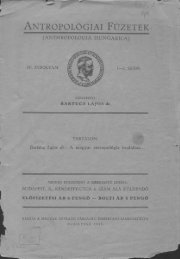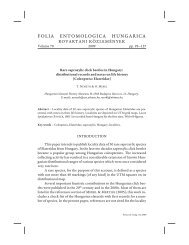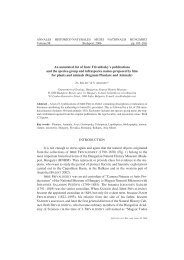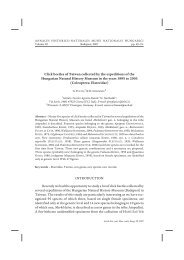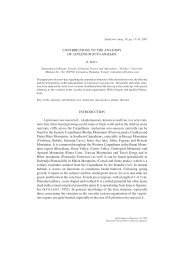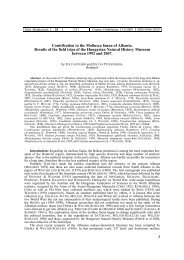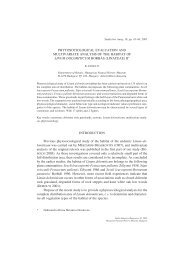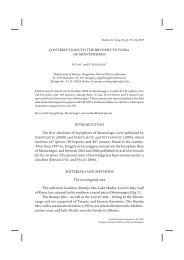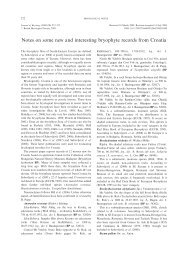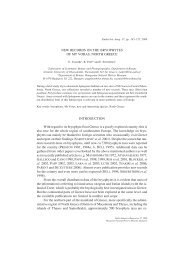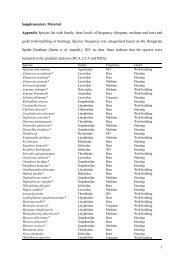THE GENUS SCHISTIDIUM (GRIMMIACEAE, MUSCI) IN HUNGARY ...
THE GENUS SCHISTIDIUM (GRIMMIACEAE, MUSCI) IN HUNGARY ...
THE GENUS SCHISTIDIUM (GRIMMIACEAE, MUSCI) IN HUNGARY ...
Create successful ePaper yourself
Turn your PDF publications into a flip-book with our unique Google optimized e-Paper software.
<strong>THE</strong> <strong>GENUS</strong> <strong>SCHISTIDIUM</strong> <strong>IN</strong> <strong>HUNGARY</strong> 75<br />
ARTIFICIAL KEY FOR <strong>SCHISTIDIUM</strong> <strong>IN</strong> <strong>HUNGARY</strong><br />
Apart from the 15 taxa found in Hungary, several others have been reported<br />
from parts of Central Europe (BLOM 1996, 1998, BLOM and LÜTH<br />
2002, GRIMS 1999), and might therefore occur in Hungary as well, though<br />
hitherto undetected. Since the highest elevation of present-day Hungary is<br />
1,015 m a.s.l. (RADÓ 1979), the occurrence of high-mountain and alpine<br />
taxa is not to be expected. Taxa that have not yet been shown to occur in<br />
Hungary, but might be expected, should, in our opinion, be included in a<br />
key for naming taxa of Schistidium collected in Hungary. In addition to<br />
those taxa that we have found in this revision, our key therefore includes<br />
the following: S. elegantulum subsp. wilsonii, S. pulchrum, S. rivulare, S.<br />
spinosum, S. trichodon var. nutans, S. trichodon var. trichodon.<br />
Taxa that have been shown to occur in Hungary are printed in<br />
type; taxa not printed in bold might occur in Hungary, but have not yet<br />
been found.<br />
Leaf lamina with papillae<br />
Lamina smooth, but papillae sometimes at leaf margin and dorsal side<br />
of costa<br />
Upper lamina in part bistratose, papillae on both (dorsal and ventral)<br />
sides of lamina; leaves never with red spots; up to 8 stomata per urn;<br />
central strand distinct<br />
Lamina unistratose or rarely with bistratose patches in upper part;<br />
papillae numerous on dorsal side, sparse or missing on ventral side (if<br />
present, then near margin, costa or apex); hair-point fine, often rather<br />
long; lamina occasionally with red spots (absent in plants from shaded<br />
sites); usually more than 8 stomata per urn; central strand absent or indistinct<br />
(< 6 cells)<br />
(siliceous rocks, also on old walls and concrete)<br />
Studia bot. hung. 39, 2008



